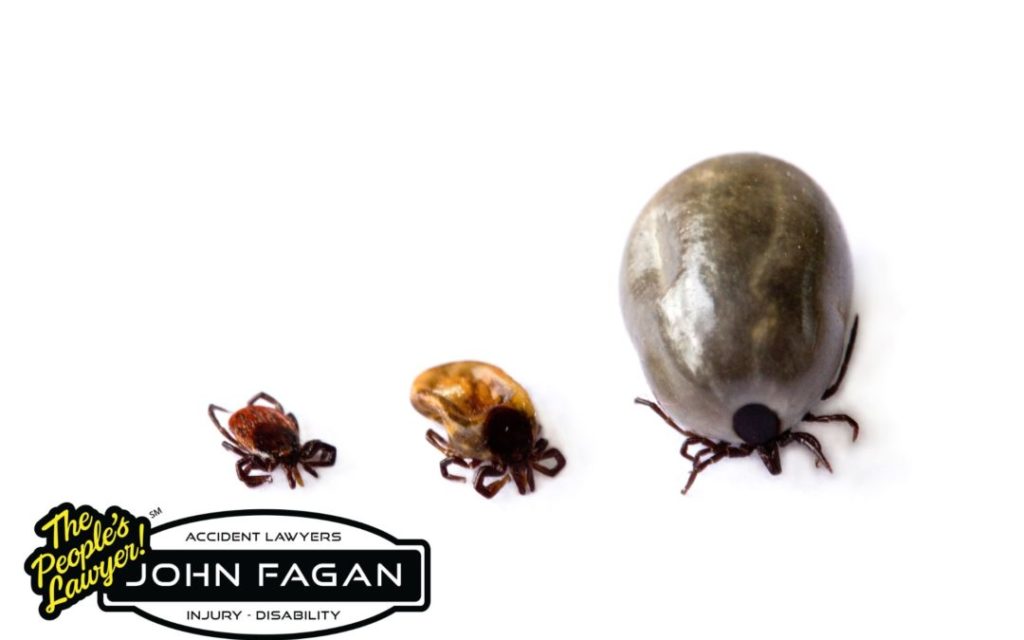Let’s face it: Florida is a breeding ground for ticks. Sit down for a moment on a fallen log this time of year, even on a piece of plastic, and you’re bound to pick one up. With our dry, not so cold winter and spring, tick hosts abound – think squirrels, raccoons, deer, and mice – and so do ticks. Did you know one female tick can lay up to 6,000 eggs at one go? Yikes!
So when you see that swarm of moving dots on your pant leg, that’s not your imagination. That’s tick larvae, which we call “seed ticks,” looking for a meal. And yes, that meal is you. Ticks are the vampires of the creepy-crawly world: they need blood meals to survive.
According to the Center for Disease Control (CDC), “Infections from tickborne diseases in the US are steadily increasing — and new tickborne diseases have been discovered in recent years. ” Although all tick species can carry viruses and bacteria, three species – the blacklegged tick (also known as deer tick), lone star tick, and American dog tick – are the main culprits. All three are found in Florida, in larger numbers every year. As are reported cases of Lyme Disease, for which the blacklegged tick is the carrier.
So what can you do to avoid ticks and the diseases they carry? Be vigilant.
We’ve always recommended wearing light-colored long pants when hiking – specifically so you can see ticks but also to avoid flying insect bites – and the CDC suggests long sleeves as well. While non-DEET repellents work fine for flying insects, DEET and Permetherin (which gets sprayed on your clothes, not you) are your front lines of defense against ticks. Gaiters, or at least pulling up your socks over your pant cuffs, helps keep them out of your shoes. Spray shoes, socks, and pants below the leg very heavily with DEET.
When you’re hiking, stay away from high grasses during tick season, which is summer, when the larvae are looking for hosts to feed off of. That’s tough to do this time of year in Florida, when trail maintenance slackens. So stick to wider footpaths, habitats where grasses are minimal, and boardwalks and paved trails.
But here’s the thing: ticks aren’t just in the woods. You can pick them up unknowingly in your yard, off your dog, even from your gardening tools. Heck, we’ve found them crawling across the radio on the dashboard of the car a day after we took a hike. So what can you do to minimize tick bites? The CDC has some recommendations, of course. We’ve added our own personal observations as well.
Don’t actively attract wildlife to your yard. Squirrels, raccoons, field mice, rats, and deer all carry ticks. Minimize accidental feeding of wildlife by securing your garbage. However, if you have a ‘possum in your yard, leave it alone. Oddly enough, opossums are kryptonite against ticks: they actively kill most of the ones that crawl on them. We always do this when we come home from a hike, but it pays to do so when you’ve been working in the yard or in the garden as well: strip off your clothes and dump them right in the washer, or hang them in the garage. Don’t let them sit around or near the bedroom in a clothes basket in case ticks are on them.Do a tick check immediately after you strip. Not just on yourself as you shower, but also before you bring pets or gear indoors.Use hot water to wash clothes and high heat (at least 10 minutes) in the dryer. Cold and medium temperature water does not kill ticks.If you have a hot tub, soak it in for at least 15 minutes. A soak in a very hot bath may work if you don’t have a hot tub. This works for killing chiggers as well as ticks.If you do find a tick on yourself or your pet, remove it properly. Follow these guidelines from the CDC. It’s smart to have tweezers (even those in a Swiss Army knife) with you whenever you’re outdoors, for this very purpose.
If you note any discoloration of your skin (or any odd sensations) after removing a tick from yourself, talk to your doctor. A bulls-eye of red around a tick bite is the tell-tale sign of Lyme disease, which needs to be treated immediately with antibiotics to prevent serious complications later on. There is a blood test available for Lyme disease; insist on it with your doctor or a walk-in clinic if you feel nervous about a tick bite. Other symptoms include extreme tiredness and weakness.
The Lone Star tick, one of five tick species in Florida (IFAS/University of Florida)
Beyond Lyme disease, a newer tick threat is on the rise. It’s had some silly names in recently news stories, like the “reverse zombie” and “vegetarian tick disease,” but the reality is indeed pretty scary if you’re a confirmed carnivore. The Lone Star tick can release a sugar molecule into your blood that activates your immune system to become violently allergic to red meat. And this reaction doesn’t happen overnight. So if you’ve had a tick bite and start feeling nauseous after eating a burger – or worse, breaking out in hives or gasping for breath – get to a hospital and get checked out. Unlike Lyme disease, there isn’t a way to make the long-term problem go away, except to stop eating red meat.
The CDC has a very thorough list of tickborne illness symptoms that you should check if you’ve been bitten by a tick.
Remember: prevention is better than being bitten. Be diligent in keeping ticks off you!






